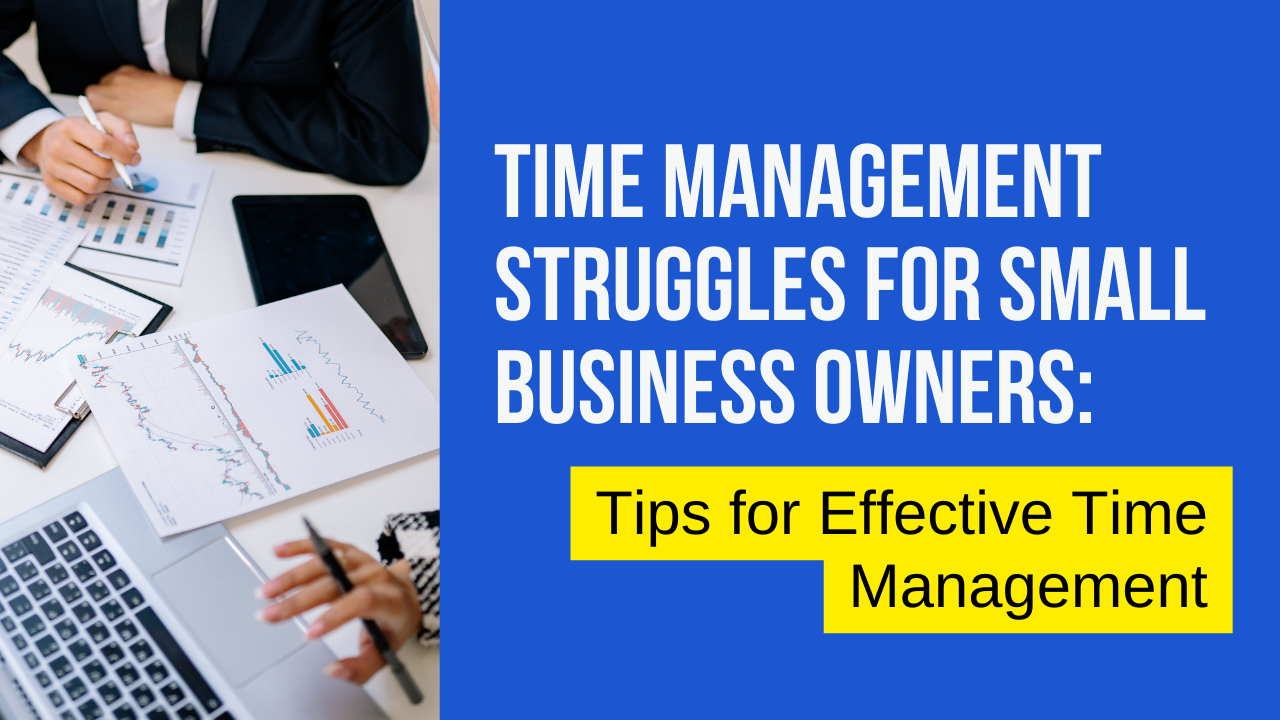Mastering Cash Flow Management for Small Business Owners

When it comes to running a business, few challenges are as crucial to navigate as the ebb and flow of cash. You could be the world's best planner, the Queen of Order, the Maestro of the Budget, or the teller of fortunes, but nobody (and we mean nobody) is immune to the occasional hiccup when it comes to not having the cash you need…when you need it.
Today, we'll explore why cash flow is paramount and provide actionable tips for its effective management.
The Importance of Cash Flow
Cash flow is the heartbeat of your business, governing its financial health. It's not merely about revenue but the strategic timing of when money enters and exits your operation. (The flow, if you will.)
Here are key reasons why you shouldn’t take your eyes off cash flow:
- Survival and Stability: Cash flow is the lifeblood that sustains day-to-day operations. It ensures the operational continuity of your business by covering immediate expenses, salaries, and essential overheads.
- Capitalizing on O...
Mistakes Small Business Owners Make When Hiring

Finding the right people for your small business is super important. But, the hiring process can be a bit tricky, and sometimes even owners with the best intentions make mistakes that can cause big problems.
In this blog post, we'll give you the lowdown on some common mistakes to avoid when hiring new employees. Our goal is to help you build a team that's a valuable asset, not a source of headaches.
1. Rushing the Hiring Process
You might feel pressured to fill positions quickly, especially when faced with increased workloads. However, rushing the hiring process can lead to hasty decisions and a higher likelihood of hiring candidates who may not be the best fit for the role or the company culture. It is important to take the time to thoroughly vet candidates and ensure that they align with your business's long-term goals. Hire slow, fire fast. Try to do it right the first time; it's far less expensive to retain (vetted and qualified) employees than to recruit and train new ones.
...
Guardians of the (Digital) Galaxy: What You Need to Know About Small Business Cybersecurity

Nearly everything we do is online these days. From the TV shows we watch to buying groceries, getting our news, communicating with friends, working out, retail therapy, banking, and virtual museum visits...there's really nothing you can do in "the real world" that you can't do online (with some ahem obvious and notable exceptions.) The point is that as technology increases, so will our consumption of - and reliance on - being connected to The World Wide Web.
As a small biz owner, protecting yourself and your customers from online threats and data breaches continues to be of utmost importance. As stewards of sensitive information, you have no choice but to adopt a serious stance towards cybersecurity.
Here are nine tips to help you stay safe.
- It's essential to have strong passwords to protect your systems and sensitive data. You can also use multi-factor authentication (MFA) to make things even more secure.
- Keep your software updated regularly to prevent any security vulnerabili...
Why You Need Business Credit (and how to build it)

Welcome to the exciting world of business credit, where the stakes are high, the interest rates are low (if you play your cards right), and being financially focused is the name of the game. We're going to break down why establishing and building business credit is not just a suggestion—it's the secret handshake to the VIP club of favorable financing options.
(Business) Size Doesn't Matter, But Your Credit Score Does.
Alright, let's debunk the myth that only the big players need to worry about business credit. Newsflash: businesses of all sizes can (and should) flaunt their credit scores like a prized possession. Why? Because whether you're a David or a Goliath, having a good business credit score means you get better rates, better terms, and a buffet of financing options. Who wouldn't want that?
The Business Credit Free-For-All.
Now, let's address the business credit elephant in the room: It's a free-for-all. Unlike personal credit, where your secrets are safe and sound unti...
Credit Cards vs. Debit Cards for Small Business Owners

Managing your finances effectively is crucial to the success and growth of your business. As a business owner, you'll face many big decisions in this realm, including whether to use credit cards or debit cards for your business transactions. Each option has its own pros and cons. In this post, we'll explore both and explain why you should consider using a credit card as your primary payment method.
Let's start with Debit Cards.
Pros?
- No Debt Accumulation: Debit cards are linked directly to your bank account, so you can only spend what you have. This reduces the risk of accumulating debt and paying interest.
- Simplicity: Debit cards are straightforward to use, and you won't have to worry about monthly payments, interest rates, or late fees.
- Security: Debit cards come with security features like PINs and chip technology, making them a safe option for in-person and online transactions.
And the cons of Debit Cards:
- No Credit-Building Opportunity: While responsible credit ca...
Don't Break the Bank: 30 Sometimes-Overlooked Expenses Small Business Owners Should Budget For

Pulse check: When was the last time you took a look at your expenses? We mean, really look at them. Line by line. Item by item. We’re talkin’ getting up-close-and-personal with the final destination of every dollar and cent that’s passed through your business.
Would any of those expenses surprise you?
Probably yes.
Whether you’re just starting out (or have been in the game for a few years), running a small business has its fair share of financial challenges. In the daily hustle and bustle to keep the metaphorical boat from sinking, it's easy to forget about certain expenses that might sneak up on you.
To keep your finances in check and prevent any nasty surprises down the road, it's essential to create a comprehensive budget. To help you out, we’ve highlighted 30 sometimes-overlooked expenses that small business owners should account for.
- Taxes and Licenses: Be sure to set aside funds for business licenses, state and local taxes, and any industry-specific permits.
- Insurance...
Budgeting and Forecasting for Small Business Success: Know the Difference

Good things come in pairs: Simon and Garfunkel. Burger and fries. Stars and Stripes. Surf and Turf.
And Budgeting and Forecasting.
As a small business owner, carefully planning your finances is a must if you want to stay IN business; budgeting and forecasting are two essential tools that can help you achieve this goal. Although they may sound the same, they serve uniquely different purposes and play a crucial role in shaping the financial health of your small business.
In this post, we'll dive into the differences between budgeting and forecasting, why they are both essential, and how they can affect your business's success and financial well-being.
Budgeting vs. Forecasting
Before delving into the importance of budgeting and forecasting, let's clarify the difference between these two financial processes:
Budgeting is like a roadmap that tells you what money is coming in and what you'll spend it on for a year. It helps you set financial goals and use your resources wisely. You...
Embracing E-commerce: Transitioning Your Brick-and-Mortar Business Online

Want to run a successful business?
Change or die.
OK, dramatics aside, there is a lot of truth in these three simple words. In a rapidly evolving world, embracing change is often necessary for businesses to thrive. Failure to acclimate will find you in the graveyard of has-beens alongside MySpace, Blockbuster, and Enron.
This holds true for any business, but brick-and-mortar operations could benefit the most from a little shake-up. More specifically, transitioning - or adding - E-commerce to their playbooks.
Obviously, there are undeniable challenges, but the advantages and opportunities are equally compelling. Here, we explore the pros and cons of taking your brick-and-mortar business online and why you might find success in unexpected ways.
The Pros of E-commerce:
- Wider Reach and Market Expansion: One of the greatest benefits of e-commerce is the ability to reach a global audience. This makes your products or services accessible to customers beyond your local community, le...
The Power of Building Good Habits for Your Small Biz Success

“Quality is not an act, it is a habit.” - Aristotle
Running a successful small business is not just about having a great product or service. It's about consistently making the right choices and building good habits that lead to long-term growth and prosperity.
The Habitual Path to Success
As a small biz owner, you've got a lot on your plate when it comes to managing all the moving parts and pieces of your operation. And this can be overwhelming, especially if you don't have a structured approach to handle all the moving parts and pieces.
That's why developing good habits is key.
Habits are the small, seemingly insignificant choices we make consistently but are the silent architects of our routines, gradually shaping the course of our businesses and our personal lives. For small business owners, recognizing the significance of these habits and harnessing their power can make all the difference between thriving and merely surviving.
Think about this: Do you have the habit of...
Time Management Struggles for Small Business Owners: Tips for Effective Time Management

Running a small business can be a fulfilling experience.
BUT (and that's a big but), it's no secret that it can be challenging to manage all the things that need to be done at all hours of the day.
We recently polled readers of our newsletter, The Weekly, and an OVERWHELMING majority (59% to be exact) said their biggest struggle as a small biz owner is Lack of Time / Time Management.
Now, if someone could figure out the whole time travel thing to give us back hours in our days, they'd be a very wealthy person. But short of any breakthroughs made in the study of quantum mechanics or whatever, we'll have to make do with the 24 hours we're given.
So, what do we do?
Before we get to the solution, let's start with the problem. (Or, problems.)
Wearing Multiple Hats
Small business owners have to fulfill several roles within their company, which is one of their most significant challenges. They are responsible for marketing and sales, customer service, bookkeeping, peacekeeping,...



